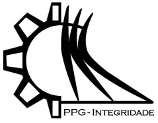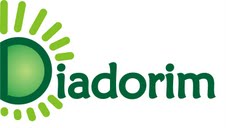ESTUDO COMPARATIVO DO DESEMPENHO DE DISSIPADORES METÁLICOS EM EDIFÍCIOS ALTOS
DOI:
https://doi.org/10.26512/ripe.v2i13.21641Keywords:
Dinâmica estrutural. Controle de vibração. Dissipadores metálicos.Abstract
Estruturas cada vez mais altas e esbeltas estão sendo projetadas e construídas, porém quando estão sob a ação de cargas dinâmicas, como terremotos e ventos, podem ficar sujeitas a vibrações inaceitáveis, logo o controle estrutural é uma alternativa para combater essas vibrações excessivas, no qual promove uma alteração nas propriedades de rigidez e amortecimento da estrutura. Dentre os dispositivos existentes, destacam-se os amortecedores metálicos, como por exemplo: o Added Damping And Stiffness - ADAS e o Triangular Plate Added Damping And Stiffness - TADAS, amplamente utilizados na prática. Quando instalados corretamente, podem aumentar significativamente a capacidade de dissipação de energia das estruturas dos edifícios, reduzindo-a nos elementos principais da estrutura evitando, assim, possíveis danos. No presente estudo, foi realizado um estudo numérico que analisou o comportamento de dissipadores metálicos aplicados ao controle de vibrações em estruturas de edifícios, para tanto, um pórtico plano equipado com os dissipadores metálicos foi submetido a uma excitação sísmica. Foi realizado um estudo comparativo dos amortecedores, do tipo X Shape, Bottle Shape e Triangular, para verificar o comportamento de cada um desses dispositivos.
References
BAGHERI, S., HADIDI, A., & ALILOU, 2011. A. Heightwise distribution of stiffness ratio for optimum seismic design of steel frames with metallic-yielding dampers. Procedia engineering, vol. 14, pp. 2891-2898.
CHALCO PARI, D. M., 2014. Análise sísmica de pórticos planos com dissipadores metálicos de energia. Dissertação em engenharia civil, PECC-UnB, Universidade de Brasília.
COMPUTER AND STRUCTURES INC. CSI, 2009. Analysis Reference Manual For SAP2000. ETABS and SAFE. Computers and Structures, Inc..
CONSTANTINOU, M. C., SOONG, T. T., & DARGUSH, G. F., 1998. Passive energy dissipation systems for structural design and retrofit. MCEER Monograph No. 1, Multidisciplinary center for earthquake engineering research, Buffalo, NY.
COSTA JÚNIOR, G. N., 2016. Estudo comparativo do desempenho de dissipadores metálicos em edifícios altos. Dissertação em andamento em engenharia civil, PECC-UnB, Universidade de Brasília.
FUJINO, Y., SOONG, T. T., & SPENCER JR., B. F., 1996. Structural control: basic concepts and applications. Proceedings of ASCE structures congress, Chigago, Illinois.
MALDONADO, J. C., 1995. Passive and active control of structures. Dissertação de mestrado, Department of civil and Environmental engineering, Massachusetts institute technology.
OLIVEIRA, F. S., 2016. Otimização topológica de dissipadores metálicos aplicados ao controle de vibrações em estruturas. Tese em engenharia civil, PECC-UnB, Universidade de Brasília.
SOONG, T. T., & DARGUSH, G. F., 1997. Passive energy dissipation systems in structural engineering. Chichester: John Wiley & Sons.
SPENCER JR., B. F., & SAIN, M. K., 1997. Controlling buildings: a new frontier in feedback. Special issue of the IEEE control systems magazine on emerging technology, vol. 17, n. 6, pp. 19-35.
SPENCER JR., B. F., & SOONG, T. T., 1999. New applications and development of active, semi-active and hybrid control techniques for seismic and non-seismic vibration in the USA.
Proceedings of international post-smirt conference seminar on seismic isolation, passive energy dissipation and active control of vibration of structures, Cheju, Korea.
TENA-COLUNGA, A., 1997. Mathematical modelling of the ADAS energy dissipation device. Engineering Structures, vol. 19, n. 10, pp. 811-821.
TSAI, K. C. et al., 1993. Design of steel triangular plate energy absorbers for seismic-resistant construction. Earthquake spectra, vol. 9, n. 3, pp. 505-528, 1993.
WEN, K. Y., 1976. Method for Random Vibration of Hysteretic Systems. Journal of the Engineering Mechanics Division, ASCE, vol. 1-02, n. EM2, pp. 249-263.
WHITTAKER, A. S. et al., 1989. Earthquake Simulator Testing of Steel Plate Added Damping And Stiffness Elements. Earthquake Engineering Research Center, University of California at Berkeley, Report N°. UCB/EERC-89/02.
Downloads
Published
Issue
Section
License
Given the public access policy of the journal, the use of the published texts is free, with the obligation of recognizing the original authorship and the first publication in this journal. The authors of the published contributions are entirely and exclusively responsible for their contents.
1. The authors authorize the publication of the article in this journal.
2. The authors guarantee that the contribution is original, and take full responsibility for its content in case of impugnation by third parties.
3. The authors guarantee that the contribution is not under evaluation in another journal.
4. The authors keep the copyright and convey to the journal the right of first publication, the work being licensed under a Creative Commons Attribution License-BY.
5. The authors are allowed and stimulated to publicize and distribute their work on-line after the publication in the journal.
6. The authors of the approved works authorize the journal to distribute their content, after publication, for reproduction in content indexes, virtual libraries and similars.
7. The editors reserve the right to make adjustments to the text and to adequate the article to the editorial rules of the journal.









